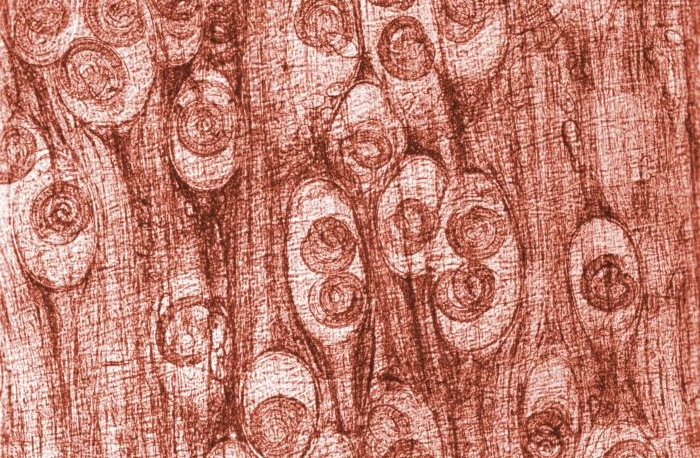Spotlight Series: Kuru
Although it is not expressly stated in the umbrella values of most dogmas or individual moral compasses, eating people is generally frowned upon. Most would say, “it goes without saying.” So, morally, we have proponents that say cannibalism is bad. To look at it from a different metric of good and bad, the United States Department of Agriculture prefers lean proteins to fatty red meats, which will overburden your daily limit of empty calories. We Americans, bursting on a culture of hamburgers and thick steaks, consume large quantities of empty calories that create a decidedly full figure. Therefore, nutritionally, cannibalism is not the diet for beach season. There exists a third reason (as well as many more that will not be addressed here) why cannibalism is bad for you, and it seems like karma. If you eat human brains, you may contract a disease that will return the favor: kuru will eat your brain. Worse yet, there is no cure.
Kuru may be untreatable, but it is also rare. So rare in fact, that it is limited geographically and temporally to the Fore tribe in Papua New Guinea, who experienced a sustained epidemic which peaked during the 1950s and slowly declined over the ensuing decades. At its peak, the disease was the most common cause of death of Fore women. The Fore tribe consumed their dead not in a malicious fashion, but as a funeral rite. After scientists identified the disease, cannibalism effectively ceased in the early 1960s – for kuru, the best treatment is prevention.
Prevention is essential because once you contract this particular Transmissible Spongiform Encephalopathy (TSE), not only is there is no cure, but it is unfailingly lethal. TSEs are typically defined by a traffic jam of bent-out-of-shape proteins, or prions, in your brain. Once in the brain, prions degrade neurological function and cause the symptoms of kuru: tremors, loss of balance, and headaches. The incubation period ranges between a few years and as long as 60 years, but once symptoms start in someone, they usually have only a few years left to live. The spongiform component of kuru is a visceral depiction of the physical effect the disease imprints on the brain: it leaves your gray matter as cratered as a sponge.
While kuru is uniquely rare, other TSEs are more famous. Most notable is bovine spongiform encephalopathy (BSE), or Mad Cow disease, which is believed to be the cause of variant Creutzfeldt-Jakob disease (vCJD). Both are prion-based illnesses. Similar to kuru, BSE occurs when cows in stockyards are fed scrap parts of other cows contaminated with prions. The practice is cheap and leads to plump slaughter-ready cows, but it is also mandated cannibalism.
Kuru and other TSEs remain controversial. As a result of their rarity and flawless lethality, some scientists have questions about whether such damaging effects can be wrought by just one little improperly angled protein. Before kuru was discovered, scientists believed that all pathogens replicated via some variety of nucleic acid, such as RNA or DNA. This premise was the foundation of most molecular biology. However, as far as we can tell, prions are able to turn other protein strands into prions with an ill-understood Midas touch. Opponents of the protein-only hypothesis posit that genetics, viruses, and even heavy metal poisoning could elucidate some other mechanism for prions to multiply. In studies, scientists found clues and hints to support each new theory but no conclusive evidence. This led to a new theory of a perfect storm between all factors.
Although the disease holds interesting implications for our molecular understanding of proteins, it does not pose the foreboding threat of epidemic. If you are not a cannibal, chances are you will never see kuru off this page.

